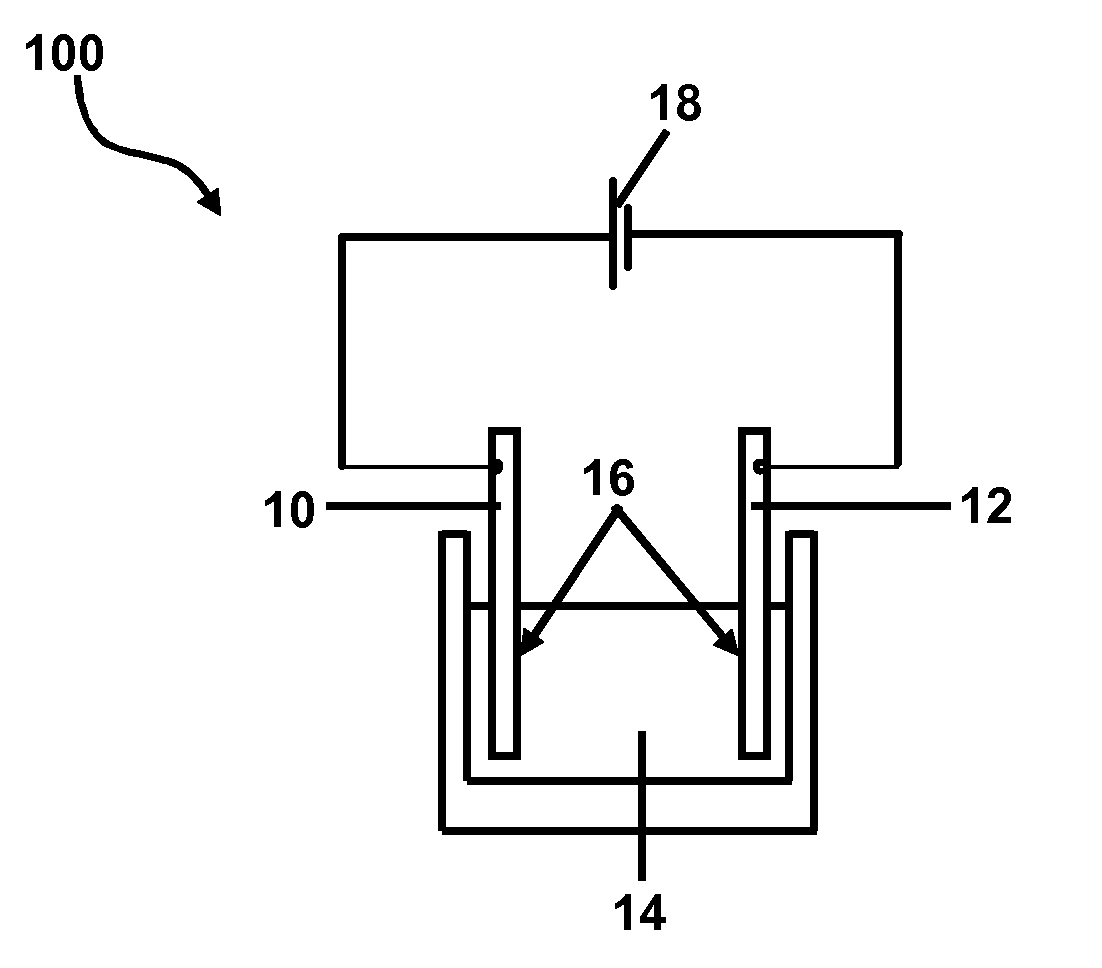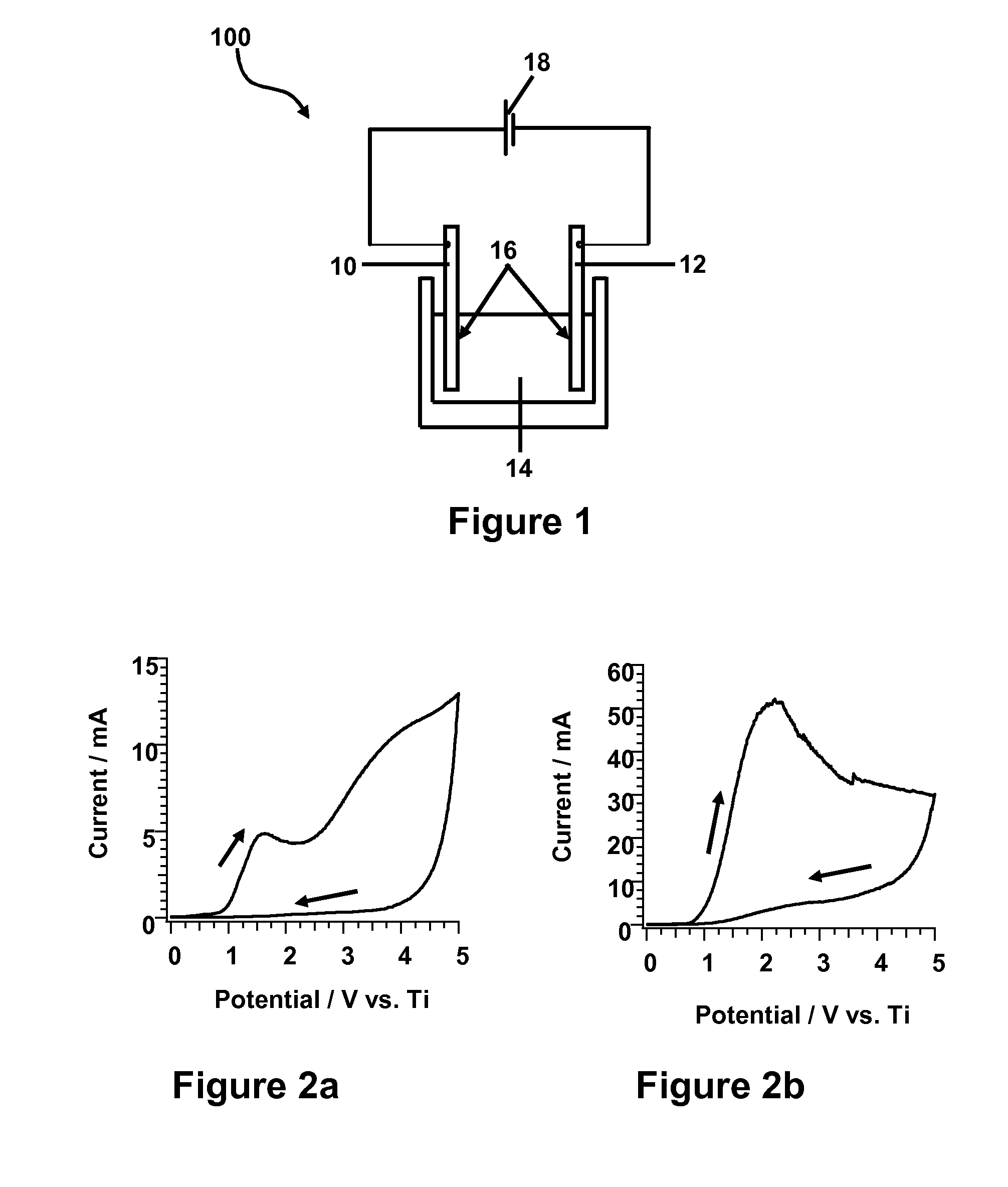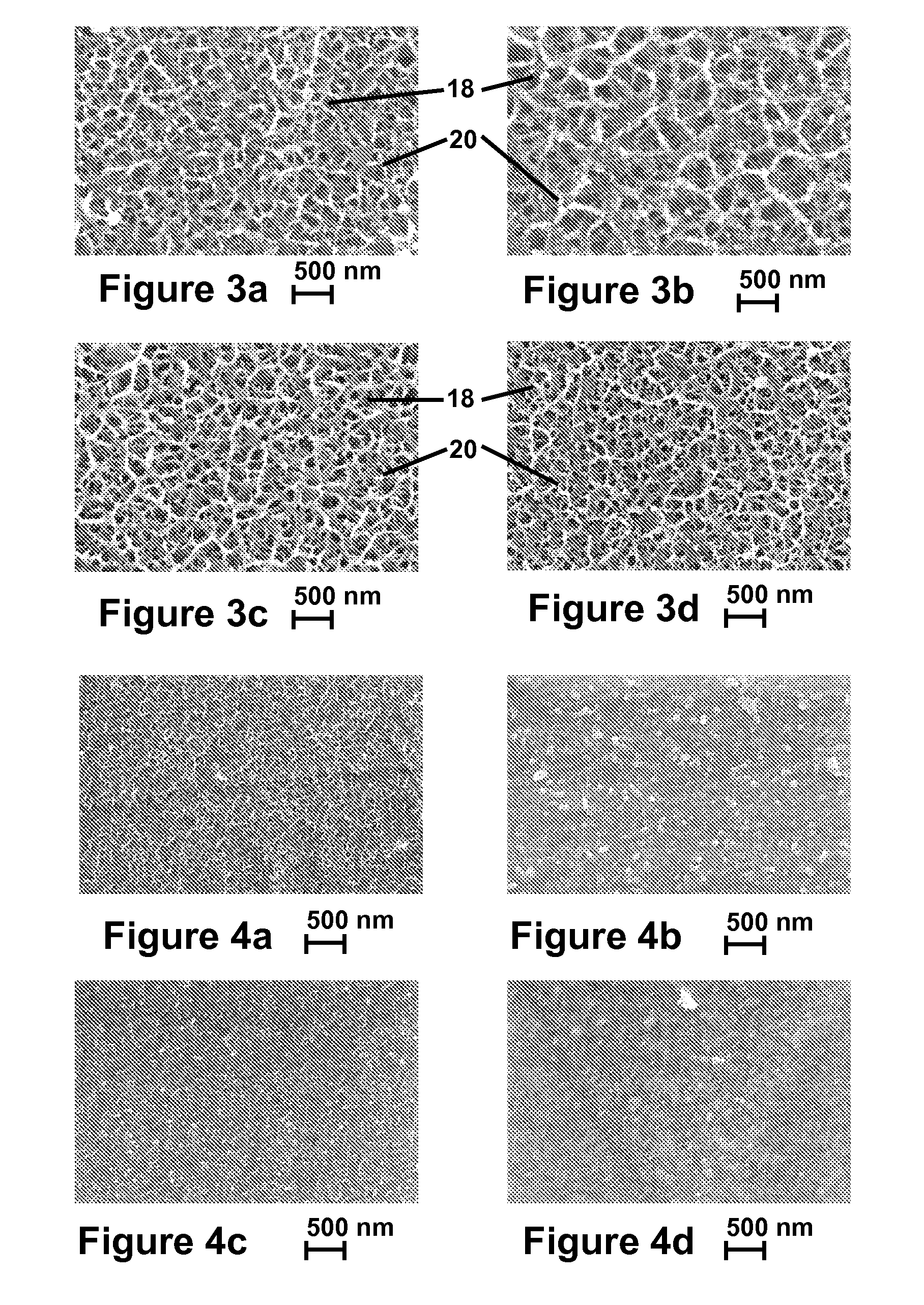Methods Of Making Titania Nanostructures
a nanostructure and nanotechnology, applied in the field of methods of making titania nanostructures, can solve the problems of increasing capital cost of high-pressure reactors, increasing handling costs, and using chemicals, and achieves the effects of reducing capital and/or manufacturing costs, increasing compositional and size control, and high electrical conductivity
- Summary
- Abstract
- Description
- Claims
- Application Information
AI Technical Summary
Benefits of technology
Problems solved by technology
Method used
Image
Examples
examples
[0038]Annealed, 99.5% titanium substrates available from Alfa Aesar were cut and cleaned by being sonicated in 1:1:1 mixture of acetone, iso-propanol, and water for 15 minutes. The titanium substrates were then rinsed in deionized (DI) water and further sonicated in DI water for 15 minutes. The titanium substrates were dried under a stream of nitrogen.
[0039]The electrolyte was prepared using certified ACS sodium hydroxide and certified ACS potassium hydroxide, both available from Alfa Aesar, in DI water.
[0040]Electrolytic cells, for example, electrochemical cells of different sizes (1.5″×1″×1″ and 3″×1.5″×3.5″ internal dimensions) were made using Teflon. Teflon was chosen since Teflon is stable in basic environment as opposed to glass or metal vessels that can be susceptible to etching and / or corrosion effects. Other materials that are resistive to a basic pH can be used to build the electrochemical cells.
[0041]A bipotentiostat, model AFRDE5, available from PINE Instrument Company, ...
PUM
| Property | Measurement | Unit |
|---|---|---|
| voltage | aaaaa | aaaaa |
| surface potential | aaaaa | aaaaa |
| volume | aaaaa | aaaaa |
Abstract
Description
Claims
Application Information
 Login to View More
Login to View More - R&D
- Intellectual Property
- Life Sciences
- Materials
- Tech Scout
- Unparalleled Data Quality
- Higher Quality Content
- 60% Fewer Hallucinations
Browse by: Latest US Patents, China's latest patents, Technical Efficacy Thesaurus, Application Domain, Technology Topic, Popular Technical Reports.
© 2025 PatSnap. All rights reserved.Legal|Privacy policy|Modern Slavery Act Transparency Statement|Sitemap|About US| Contact US: help@patsnap.com



